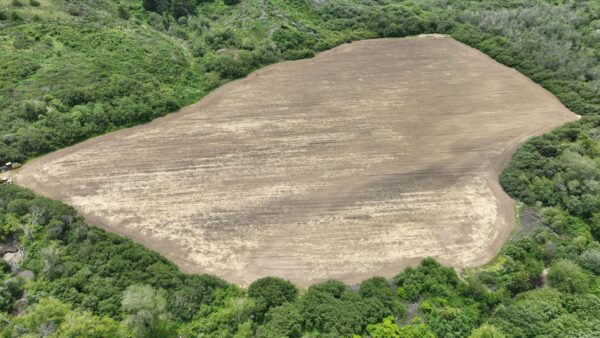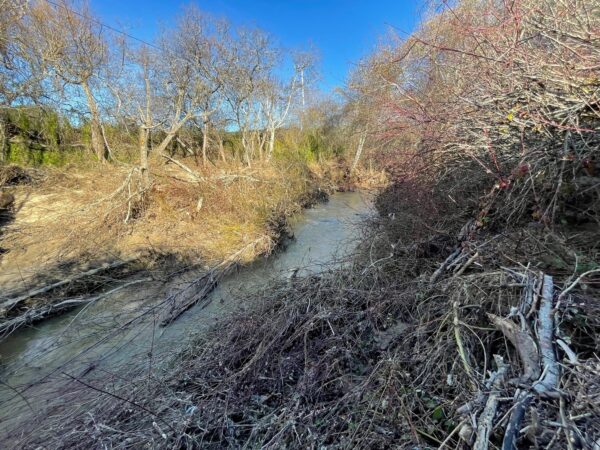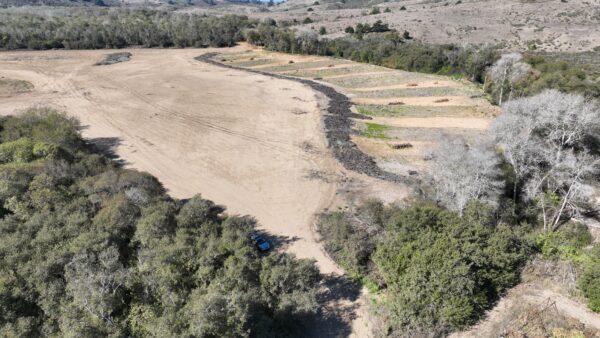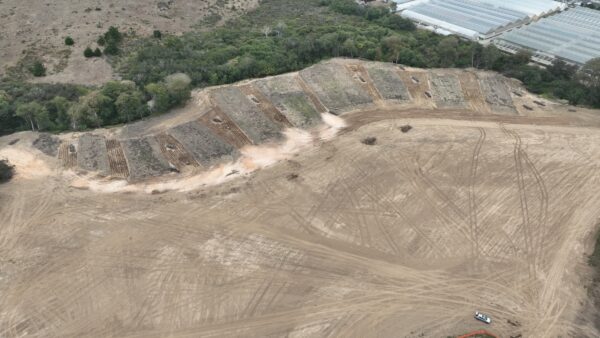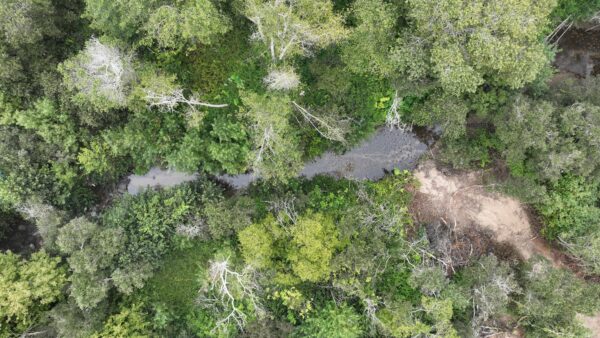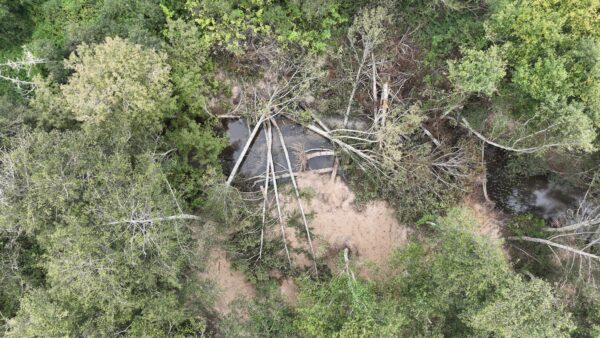About this project
Project Location
This project by San Mateo Resource Conservation District is located along Butano Creek in Pescadero, on an actively farmed property owned by the Peninsula Open Space Trust (POST). Beneficial for both conservation and agriculture, this project is part of a larger, coordinated effort to improve flow, connectivity, and both instream and floodplain habitat conditions within the Pescadero-Butano watershed, and builds upon recent floodplain reconnection and flow improvement projects that were implemented at downstream parcels and points of diversion. The project is located in the Coastal Zone.
Project Partners
Fifth Crow Farm, Peninsula Open Space Trust, and Trout Unlimited
Species Benefited
This watershed has been identified as a high priority for the protection and recovery of state- and federally-protected salmonids. The project is designed to benefit Central California Coast coho salmon (Oncorhynchus kisutch) and Central California Coast steelhead trout (Oncorhynchus mykiss) and will also benefit other special-status species, including California red-legged frog (Rana draytonii), San Francisco garter snake (Thamnophis sirtalis tetrataenia), and other native species.
San Mateo RCD has been monitoring coho salmon in this creek using PIT tags antenna arrays in partnership with the California Department of Fish and Wildlife, California Trout, and others.
Project Description
The project includes floodplain reconnection and flow enhancement components, both of which will have direct and indirect benefits to instream and adjacent floodplain and terrestrial habitats.
Floodplain reconnection
First, the project will create 4.2 acres of low floodplain and 1 acre of gently sloped riparian habitat by lowering the current floodplain surface by as much as several feet, allowing the stream to access the lowered floodplain during winter baseflow conditions. This improved connection will also increase the stream’s access to an additional 100 acres of historic floodplain, providing access 2.5 times as frequently as current conditions allow and offering low velocity aquatic habitat for juvenile coho salmon and steelhead. More frequent inundation of Butano Creek’s floodplain environment will also enhance adjacent wetlands and is expected to benefit special-status reptiles and amphibians.
Habitat structures
In addition to restoring floodplain connection, the project design includes the placement of 15 to 20 habitat structures (roughness elements) within the newly created floodplain surface and adds in-channel habitat features, including one engineered logjam and several post-assisted log structures/living riffles. Additionally, the native vegetation that is removed during floodplain grading will be reused in planting, except for senescent alders which will be used to add roughness in select bank and floodplain areas. Together, these features will increase habitat complexity, disperse energy during high flows, help reverse channel incision, and restore geomorphic processes such as aggradation and floodplain storage of sediment.
Flow enhancement
The project’s second objective is to increase dry-season (June-October) flows in Butano Creek. Restoring flow during this critical window and meeting the farm’s existing irrigation needs requires a substantial change in water diversion practices, from the present regime, which relies on dry-season withdrawals, to one requiring wet-season withdrawals only by improving water storage for subsequent dry-season irrigation. With implementation of the project, dry-season diversions will no longer occur.
The project will facilitate this transition by expanding capacity at an existing off-channel storage pond, from 5.2 to 16 acre-feet, and establishing a forbearance agreement that institutes this new regime. The project will reduce instantaneous diversion rates by 0.22 cubic feet per second from April to May and 0.51 cubic feet per second from June to October, returning an estimated 2 acre-feet of water to the stream each month and increasing dry-season flows by 124 percent. The flow benefits resulting from the Project will be realized all the way to the stream’s terminus at Pescadero Marsh.
The two known active diversions on Butano Creek downstream of the project site both have storage ponds and diversion seasons of December 1 to April 1 and December 1 to June 1, respectively. The project’s flow enhancement benefits will be ensured into the future via a 20-year (or longer) forbearance agreement that will be signed by the project site landowner, San Mateo Resource Conservation District, and Trout Unlimited before project implementation. That forbearance agreement will be registered with San Mateo County and recorded against the project site property.
Permitting Tip from San Mateo RCD
Reach out to permitting agencies early and often so they’re in the loop when it comes time to apply for your permits, and treat them as project partners who are working to get these projects done.
Proponent
San Mateo Resource Conservation District
Status
Project has been implemented
Type of project
- Floodplain restoration
- Large wood augmentation
- Stream and riparian habitat and upslope watershed sites
- Water conservation
County or Counties
- San Mateo
Watershed
Pescadero-Butano Watershed
Project size
4.2 acres of low floodplain and 1 acre of gently sloped riparian habitat.
Project documents
Permitting pathways used
- CEQA Statutory Exemption for Restoration Projects (SERP) – CDFW
- USACE Nationwide Permit 27 – Aquatic Habitat Restoration
- Water Board Statewide Restoration General Order (SRGO)
- CDFW Restoration Management Permit (RMP)
- USFWS Statewide Restoration Programmatic Biological Opinion (PBO)
- Central Coast NMFS Programmatic Biological Opinion (PBO)
- North and Central Coast Federal Consistency Determination (CD) – Coastal Commission and NOAA Restoration Center
- NOAA Restoration Center Programmatic Environmental Impact Statement (EIS)

